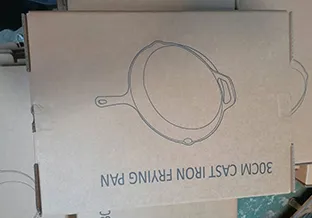
Versatile Ceramic Dutch Oven for Delicious Cooking and Baking at Home
Exploring the Beauty and Functionality of Ceramic Dutch Oven Pots
When it comes to versatile kitchenware, few items can match the appeal of a ceramic Dutch oven pot. These stunning pieces, often adorned with vibrant colors and elegant designs, not only serve as functional cookware but also as beautiful serving dishes that can transition seamlessly from oven to table. In this article, we delve into the unique characteristics of ceramic Dutch ovens, their benefits, and tips on how to make the most of them in your kitchen.
The Essence of Ceramic Dutch Ovens
Ceramic Dutch ovens are typically made from clay that has been fired at high temperatures, resulting in a durable and non-reactive surface. They come in various shapes, sizes, and colors, allowing home cooks to express their culinary creativity. One of the distinctive features of ceramic cookware is its ability to retain heat evenly. Unlike metal pots, which can create hot spots and lead to uneven cooking, ceramic distributes heat uniformly, ensuring perfectly cooked meals every time.
Benefits of Using Ceramic Dutch Ovens
1. Versatility Ceramic Dutch ovens are perfect for a multitude of cooking methods. Whether you're braising meat, simmering soups, or baking bread, these pots are up to the task. Many ceramic Dutch ovens are stove-to-oven safe, so you can start your dish on the stovetop and transfer it directly to the oven for finishing.
2. Non-stick Properties The naturally non-stick surface of ceramic makes for easy cooking and cleanup. Dishes slide right out, meaning less mess to scrub after a delicious dinner. Plus, ceramic is generally free from harmful chemicals often found in non-stick alternatives, like PTFE and PFOA.
3. Aesthetic Appeal A notable advantage of ceramic Dutch ovens is their beauty. Available in a myriad of colors and designs, they can enhance the visual aesthetics of your kitchen or dining table. Whether you prefer a rustic or contemporary look, there’s a ceramic Dutch oven that fits your style.
4. Health Benefits Cooking in ceramic is a healthier choice. Since it doesn’t leach any chemicals into your food, ceramic is a safe material for cooking, making it a popular choice for health-conscious individuals.
ceramic dutch oven pot

Best Practices for Using a Ceramic Dutch Oven
To ensure that your ceramic Dutch oven remains in peak condition for years to come, follow these guidelines
1. Preheat Gradually Ceramic can be sensitive to sudden temperature changes. To avoid cracking, slowly preheat your pot; this also helps to enhance the flavors in your dish.
2. Use Wooden or Silicone Utensils To preserve the integrity of the ceramic coating, opt for wooden, silicone, or plastic utensils that won't scratch the surface. This will extend the life of your Dutch oven significantly.
3. Cooking at Moderate Temperatures Although ceramic Dutch ovens can handle high heat, it's generally recommended to cook at medium to low temperatures. This allows for even heat distribution and minimizes the risk of damaging the ceramic.
4. Proper Cleaning Allow your Dutch oven to cool down before washing it. Use gentle detergents and avoid abrasive scrubs to keep the surface intact. The beauty of ceramic pots lies not just in their cooking ability but also in their aesthetic charm, so a little care goes a long way.
Conclusion
A ceramic Dutch oven pot is more than just a piece of cookware; it’s a wonderful combination of beauty, functionality, and versatility that enhances any kitchen experience. Whether you’re a seasoned chef or a cooking novice, incorporating this timeless piece into your culinary collection can elevate your cooking game. Explore the world of ceramic Dutch ovens and enjoy the myriad of delicious meals you can prepare with this exceptional cookware. From family dinners to special gatherings, a ceramic Dutch oven will undoubtedly become a cherished companion in your kitchen for years to come.
-
Cast Iron Cookware Pancake Pan- ZD Cookware|Non-Stick, Even Heat, DurableNewsAug.02,2025
-
Cast Iron Cookware- Baixiang County Zhongda Machinery|Non-Stick, Heat RetentionNewsAug.02,2025
-
High Quality Kitchen Durable Black Round Cast Iron Cookware Pancake Crepe Pan With Wooden Handle|Non-Stick Surface&Heat RetentionNewsAug.02,2025
-
Authentic Traditional Chinese Wok for High-Performance CookingNewsAug.02,2025
-
Season Cast Iron Perfectly with GPT-4 Turbo TipsNewsAug.01,2025
-
High Quality Cast Iron Cookware - Baixiang County Zhongda MachineryNewsAug.01,2025


